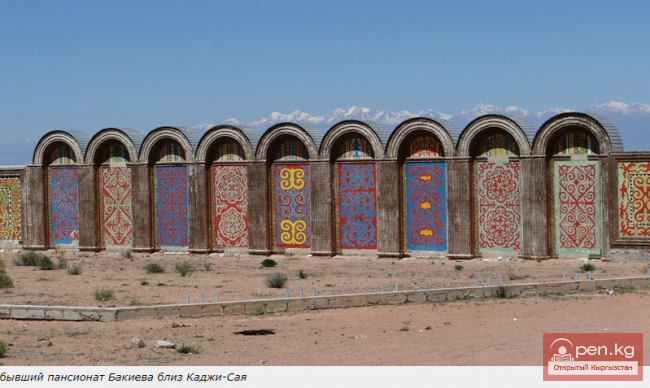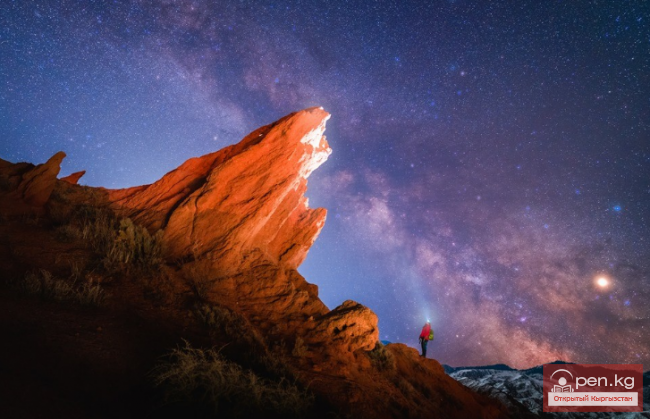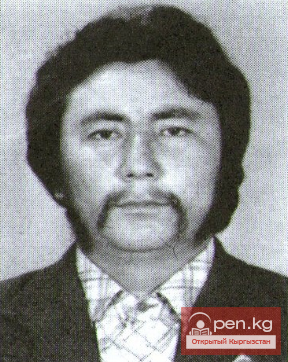Kadzhi-Sai - a leap from a closed zone to a tourist destination
Kadzhi-Sai is today a quiet, almost forgotten village in the Ton district of the Issyk-Kul region. Located on the southern shore of Issyk-Kul along the Balakchy-Karakol highway, the village is 270 km from Bishkek and 120 km from Karakol.
The history of the settlement begins in 1947 when uranium deposits were discovered near Kadzhi-Sai at a depth of 600 meters. This fact was crucial for the policy of the Soviet Union, which at that time was actively engaged in exploratory work to find uranium ores that would serve as raw materials for the production of atomic bombs. It was during this period that Lavrentiy Beria issued an order to create a closed-type village a short distance from the mine, which for a long time was considered a kind of "mailbox." In addition to uranium deposits, the village was famous for its strategically important enterprise – the Kadzhi-Sai Experimental Electrical Engineering Plant, which exported products to many countries around the world and also served domestic military industry enterprises. Another branch of Kadzhi-Sai's industry was coal mining at the "Central" mine, which accounted for 30% of the consumer coal volume in the entire Issyk-Kul region. By 1960, it became clear that the low content of radioactive elements in the rock made uranium extraction in this region unprofitable and low-yielding. Therefore, the village was completely reoriented to coal mining in the mines and servicing the experimental electrical engineering production. In the 1970s, during the period of active development, more than 7,000 residents lived and worked in the village, and by the 1990s, the population reached its maximum of 10,000 people. The perestroika period for Kadzhi-Sai was characterized by a rapid and swift collapse of its strong industrial base. The loss of long-standing economic ties led to the factory's products losing their market, and the unprofitable uranium mines were completely shut down. Subsequently, the equipment was sold off, the workshops were looted, and almost the entire population was left without work and prospects.
The combination of these factors led to the migration of the population from Kadzhi-Sai to nearby and far abroad, and currently, the population barely reaches 4,000 people.
However, despite all these hardships and the fact that the economic situation today is far from ideal, Kadzhi-Sai seems to be finding a new purpose — thanks to the nearby Issyk-Kul Lake.
Today, the village has more than twenty guest houses, not all of which are managed by local residents — some have been opened by residents of Bishkek.
This contrasts with the Soviet era. The village could not then take advantage of its proximity to the lake and become a resort area, as it was closed even to citizens of the USSR due to its status.
Often in the media, information about radioactivity within and near Kadzhi-Sai can be found. Indeed, uranium ore extraction was conducted here until 1968, and later uranium burial sites and tailings were organized, with a total capacity of more than half a million cubic meters. Thus, two kilometers from the lake shore, in the valley of the Tian Shan mountains [Ala-Too], lies the largest of them. For many years, a permanent expert group has been conducting background measurements and recording radiation. Directly on the concreted mines, tailings, and burial sites, gamma radiation levels reach 1000-1500 µR/hour, which is several times higher than the norm of 20 µR/hour. On the territory of the village, specifically at the site of a guest house, the dosimeter reading did not exceed 30 µR/hour, which scientists consider a normal background for Moscow and the Moscow region. Nevertheless, the international commission sees no danger, and we did not feel it either. Vegetables, however, differ in size from the usual: radishes, for example, are the size of a small apple. Although local residents explain this fact by the unique features of the favorable highland climate, rather than the involvement of radiation in agriculture. It is rumored that crops of small and familiar sizes to our urban eyes have never been seen here.
The structure of the village has always been considered quite peculiar and is divided into several conditional zones. In close proximity to the lake shore on the northern side, in the place where the bus depot used to be, there is an area known as the "garage." Passing through the Bishkek-Karakol highway, the "northern garage" stretches along the Kadzhi-Sai riverbed for 3.5 kilometers and ends in the southern or central part, which concludes with the picturesque mountain slopes of the Kungoy Ala-Too ridge. Beyond that, the road winds and leads to the beautiful landscapes of the Kadzhi-Sai gorge. On the other side, much further east, lies the so-called "industrial site," which received this popular nickname due to the coal mining mines and electrical engineering plant workshops located in this area.
But the Kadzhi-Sai cliffs are famous not only for their colorful layers and rocks but also for their high ancient burial mounds and rock petroglyphs. Just a kilometer from the mouth of the Kadzhi-Sai river lie the remains of an ancient settlement. Archaeologists have established that these surviving ruins are the once-famous walls of the Caravanserai, built on the shores of the lake in the 10th-13th centuries. The nature and size of the fortifications and extensions are somewhat similar, having rectangular slabs at their base. Evidence that there was indeed an ancient city here includes the discovery of more than 100 residential and economic premises, as well as the clearing of medieval streets, tunnels, and passages. The walls of numerous buildings were constructed from uniform adobe bricks, and the excavated landscape is strewn with numerous clay dishes, grain grinders, stone millstones, grindstones, and bones of ancient animals. The main work on excavations and archaeological expeditions was carried out by D.F. Vinnik.
As for the tourist infrastructure of Kadzhi-Sai, for a long time, the boarding houses and recreation homes in the private sector were empty and completely abandoned. Currently, restoration work is underway, and events are being held to attract tourists to this region. After all, Kadzhi-Sai has all the conditions to make tourism in this region not seasonal, but year-round. Specifically, a radon source discovered in the 1990s, based on which a health resort is already being completed. Until 1991, Kadzhi-Sai housed a training base of union significance. The unique climatic conditions, combining sea air and a significant altitude difference, contributed to the development of the sports industry. All this still creates opportunities for holding sports competitions in many sports.
The trends in the development of Kadzhi-Sai are such that a once-developed and popular center on the southern shore of Issyk-Kul, forgotten and abandoned by all later, is today experiencing a rebirth and slowly beginning to acquire modern features and significance. With the proper use of existing natural and recreational resources, Kadzhi-Sai has every chance of becoming a pleasant place for recreation, revealing to tourists the endless mysteries of bygone eras.
The climate of Kadzhi-Sai is influenced by the local steppe climate. There is little precipitation throughout the year. The climate here is classified as BSk by the Köppen-Geiger system. The average air temperature in Kadzhi-Sai is 5.1 °C. Approximately 238 mm of precipitation falls annually. The difference in precipitation between the driest and wettest months is 35 mm. The temperature variation throughout the year is 30.4 °C. The driest month is December with 4 mm of precipitation. The highest amount of precipitation falls in June, averaging 39 mm. The warmest month of the year is July with an average temperature of 18.9 °C. The lowest average temperatures occur in January, when it is around -11.5 °C.






















































